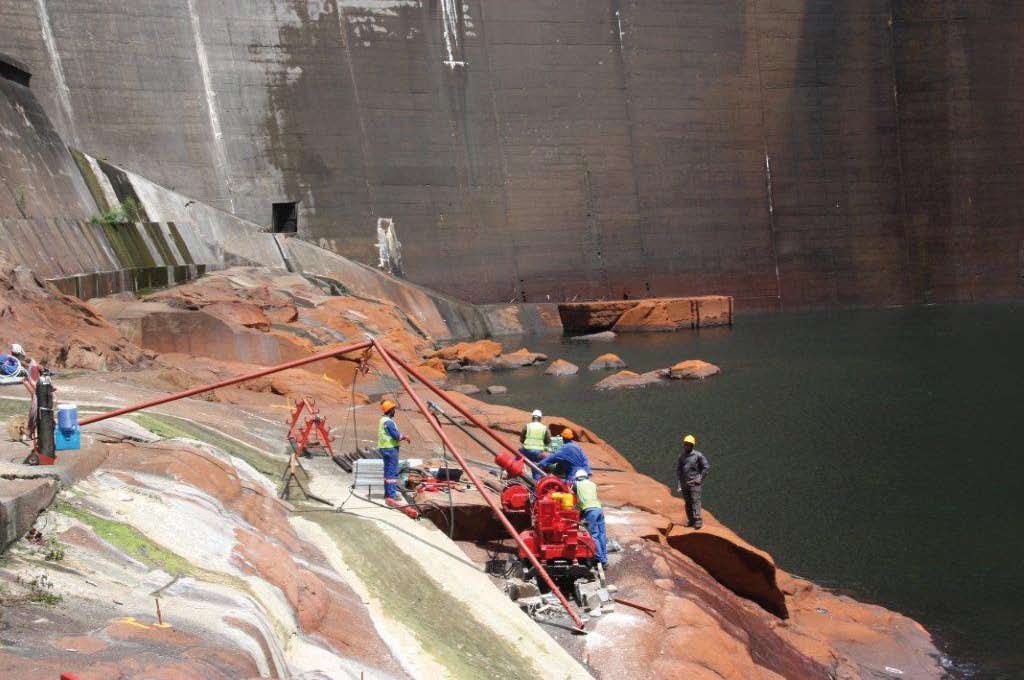
Italian company “DAT instruments” dataloggers and software played a main role in the geothechnical investigation (as Lugeon test to get information on soil permeability) on the Zambesi banks, between Zambia and Zimbabwe, near Kariba Dam.
 Kariba Dam is an hydroelectric dam built on the Zambesi river, between Zambia and Zimbabwe. Designed and built by Italian companies, is one of the biggest dams in the world. The dam is 128m high, 579m wide and provides 1,320MW of power to the two African countries.
Kariba Dam is an hydroelectric dam built on the Zambesi river, between Zambia and Zimbabwe. Designed and built by Italian companies, is one of the biggest dams in the world. The dam is 128m high, 579m wide and provides 1,320MW of power to the two African countries.
A lithological project was recently started in this area, with the purpose of understanding the phenomena of the alteration of rock (braking, disintegration, etc.), related to the weather and river activity.
Another part of this research analized the geothechnical parameters of the soil. The Lugeon tests were performed with a DAT instruments JET DSP 100 / IR, considered a valid equipment to record water pressure and flow parameters in real time.
International studies and geotechnical investigations
Zambesi River Authority nominated Coyne et Battier (Tractebel Engineering France) consultants for the engineering studies of this project on Kariba Dam. In these regards, and for future co-operations, the need for further geotechnical surveys led the project managers work with the company “Prinsloo Drilling Namibia”, 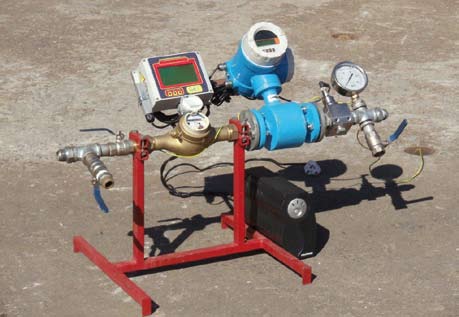 an expert on surveys in large dams. The goal was to identify the soil characteristics, in terms of braking, alteration, hardness, abrasiveness, strength, deformability and permeability.
an expert on surveys in large dams. The goal was to identify the soil characteristics, in terms of braking, alteration, hardness, abrasiveness, strength, deformability and permeability.
The lithological study has been performed through rotary drillings, on site tests, collections of rock samples and laboratory analysis, drilling wells (150m deep) on both banks. This boreholes in soft ground had a minimum diameter of 76mm, and the boreholes in harder rock had a diameter of 48mm. All without using a lube. Permeability tests were performed using a single packers (in the section below) just after the drilling. That way, the lower hole sections (5 meters) have been identified and the percentage of the lost water has been measured with a different pressure values.
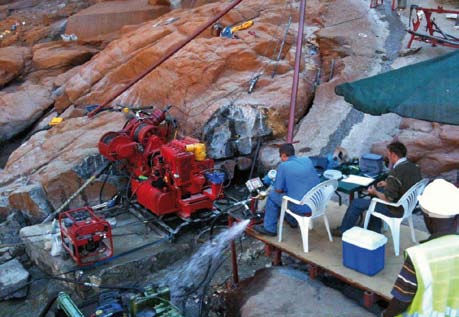 Electronic data recording
Electronic data recording
In recent years, the use of data logging instrumentation allowed to display and record Lugeon tests parameters in real time. These instruments detect the values of flow and pressure at regular laps of time; they display data on an LCD screen and allow to download data on a PC to do the necessary analysis and produce proper graphs. In this way, it is also possible to monitor the values during the test.
For the Lugeon test it has been used a data display and recording system made by DAT instruments, the JET DSP 100 / IR. Through an hydraulic separator and a pressure sensor it allows to visualize real time parameters, to use a wide range of settings with their software and printing data. Water pressure has been measured with an electronic pressure sensor placed on the borehole; the digital display allowed the operator to have control over everything. Electromagnetic flow meter was used and installed between the pump and the borehole.
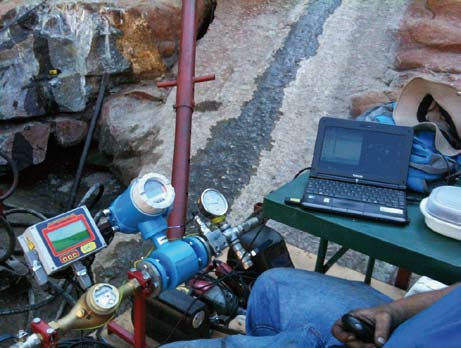 The test procedure
The test procedure
Before the test, the static level of underground waters is measured; straight after the drilling of the section, the hole is washed with pumped water until the water turns to be completely accurate; the packer is then placed in the correct position and the distance between the borehole and the hydraulic separator is measured. Now the water is pumped in the borehole and for each test there are 5 sections: 3 sections with a progressive increase of pressure, followed by other 2 steps with decreasing pressures. Every step of pressure lasts 15 minutes after reaching a consistent water absorption rate. The water absorption rate is controlled every 2 minutes. The variation must not exceed 0,1 l/sec. Pressure steps depend on the quality, on the soil characteristics and on the depth of the tested section and they could change depending on the specific purpose of the test. During the test all the details are recorded on the test report. The results of this test show the loss of water related to pressure, the Lugeon value.
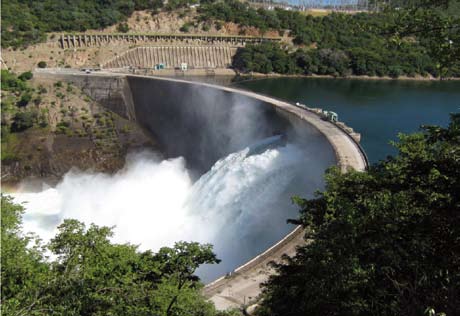 DAT instruments solution
DAT instruments solution
Along the Kariba dam JET DSP 100 / IR instrumentation allowed to measure parameters of pressure, flow and volume of the test, to visualize directly on the datalogger display the real time values and to download the recorded data to a PC, for the creation and printing of summary sheets, for quick and easy retrieval of all information about injections made and export data to a Microsoft Excel sheet. Besides the possibility to access data later, the system can connect directly to a PC to display real time Lugeon graphs. For that kind of survey, the Italian company manufactures and provides also the JET 4000 AME / I instrumentation that, not only records and shows the values of real time pressure, flow and volume, but also let: the automatic stop of the pump reaching the set rejecting pressure of the volume to be injected, using GIN method, or reaching the maximum set time; the automatic restart of the injection if, after the stop, the pressure decreases under a set value; the start of the injection directly from the JET 4000 AME / I keyboard. All the products use the software JET S 104 for the following processing, storing and printing of data. Both instrumentations can be used also for injections of cements.
